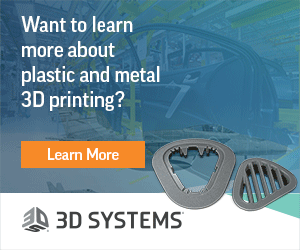Like individuals, large corporations reflect the positive and negative characteristics of their ancestors. Seiko Epson, the huge Japanese 2D printing company like HP before them has announced they are making a business transformation into 3D printers. The purpose of this article is to reflect on some of the 2D business DNA items that may positively or negatively affect the 2D to 3D business transformation.
Potentially Positive Business DNA
Undoubtedly, Seiko Epson has observed HP’s 2D and 3D transformation which thus far appears to be progressing quite well. HP and Epson are both large businesses with extremely valuable brand names and many years of 2D printer equipment design, manufacturing and selling experiences. Both companies have well established global sales channels and business solution ancillary services such as equipment leasing. The 2D printing sales channels that support architecture, engineering, and design businesses will be particularly valuable for 3D printing.
Both companies have learned how to create annuity businesses with strong materials replacement businesses particularly ink and replacement parts. Both companies have robust and intellectual property programs and strong patent portfolios. For printer technology, both companies are known for being technically strong with 2D printer head technology. Epson is known for its extensive use of piezoelectric technology as a backbone technology for its 2D printer business. Piezoelectric technology is particularly effective with liquid applications. The name Epson is actually a derivative for Son of Electric Printer.
Below depicts a comparison of HP and Seiko Epson’s R&D related expenditures:
Potentially Negative Business DNA
2D printing is a mature business and arguably a mature cash cow business that requires different management talents than creating new offerings in a fast-changing, innovative business. The sales channel for 2D printing is primarily focused on office and service businesses whereas 3D printing with end use products is in large part an industrial and commercial business.
HP has hit the ground running with 3D printing with both large investments and some important strategic partnerships with some very large companies such as Siemens, Deloitte, and Nike. On November 1, 2017 HP completed the purchase of Samsung’s 3D printing business along with 6,500 patents. Seiko Epson will need to make some major investments and critical business moves just to keep up with HP never mind leap frog. Epson has spent 5 years developing its 3D printer offering in relative secrecy so it remains to be seen what the company will be bringing to market.
Currently, Seiko Epson is a much smaller company compared to its 3D printer brethren so it will need to find a way to distinguish itself. In the industrial commercial space, the major new 3D printer business opportunities appear to be metals where the raw material is metal powder as opposed to ink and liquids. The conversion process from 2D to 3D has just begun for HP and Seiko Epson, so it remains to be seen whether 2D DNA can evolve to good 3D offspring.
Charles Goulding of R&D Tax Savers discusses changes in the printing business.
Subscribe to Our Email Newsletter
Stay up-to-date on all the latest news from the 3D printing industry and receive information and offers from third party vendors.
You May Also Like
Gorilla Sports GE’s First 3D Printed Titanium Cast
How do you help a gorilla with a broken arm? Sounds like the start of a bad joke a zookeeper might tell, but it’s an actual dilemma recently faced by...
Nylon 3D Printed Parts Made More Functional with Coatings & Colors
Parts 3D printed from polyamide (PA, Nylon) 12 using powder bed fusion (PBF) are a mainstay in the additive manufacturing (AM) industry. While post-finishing processes have improved the porosity of...
$25M to Back Sintavia’s Largest Expansion of Metal 3D Printing Capacity Since 2019
Sintavia, the digital manufacturing company specializing in mission-critical parts for strategic sectors, announced a $25 million investment to increase its production capacity, the largest expansion to its operations since 2019....
Velo3D Initiates Public Offering in a Bid to Strengthen Financial Foundations and Drive Future Growth
Velo3D (NYSE: VLD) has been among a number of publicly traded 3D printing firms that have attempted to weather the current macroeconomic climate. After posting a challenging financial report for 2023,...
































